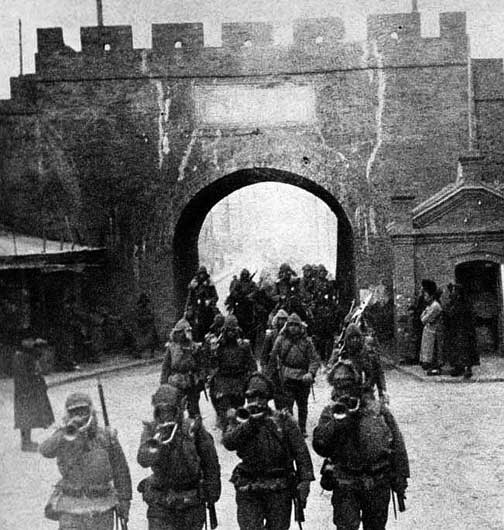Japanese Invade Manchuria

Japanese Troops in Mukden
On September 18th, 1931, in violation of all its treaty obligations, Japan occupied Manchuria, in northeast China. It was the first step on the path to World War II. American's reacted with the "Stimson Doctrine," which stated that the United States would not recognize any treaty that impinged on the sovereignty of China.
As part of earlier treaty agreements, the Japanese had troops protecting the railroad in Southern Manchuria. The Japanese wanted to expand their control over Manchuria so on September 18, 1931; the Japanese planted a small explosive device next to the tracks owned by Japan's South Manchuria Railroad near Mukden. The explosion that followed became known as the Mukden incident and provided an excuse for the Japanese to seize all of the cities along the railroad. At the same time, the Japanese army in Korea (which was occupied by the Japanese) sent forces into Manchuria and quickly seized all the major cities in Liaoning and Kirin provinces. All of this took place without the approval of the civilian government in Japan.
The Japanese continued to advance, despite Chinese opposition. By February 27, 1932, the last Chinese opposing the Japanese were forced to surrender all of Manchuria was in Japanese hands. The League of Nations sent a commission to investigate the attack. The commission held Japan responsible and the League condemned the Japanese actions but were unwilling to go further. The Japanese withdrew from the league.
 >
>